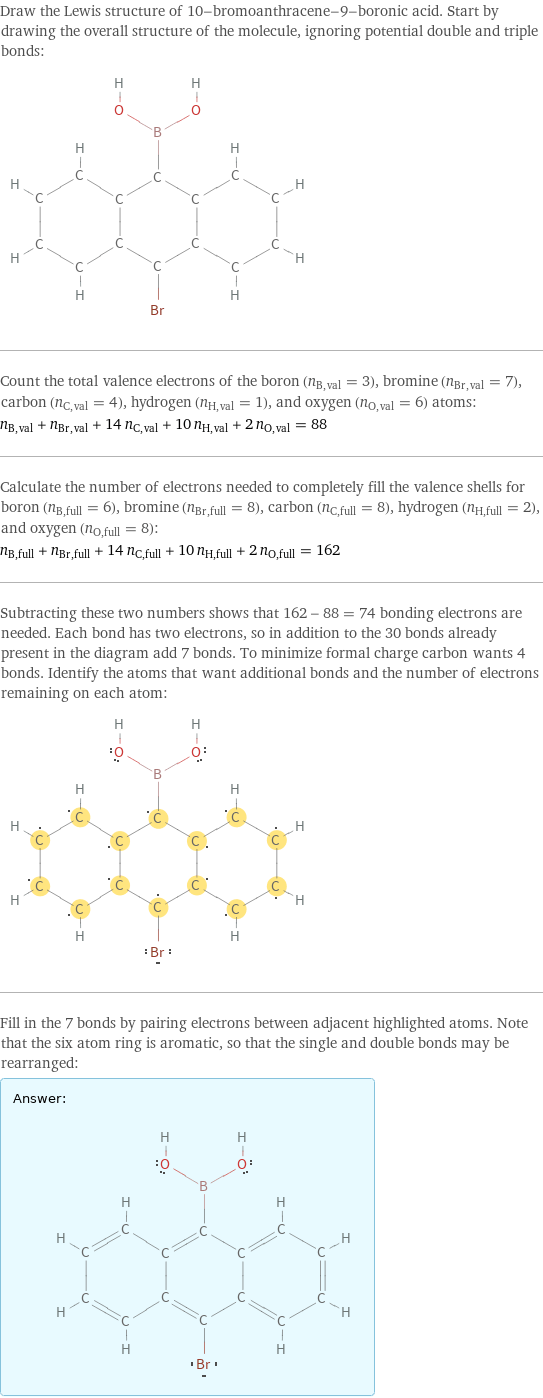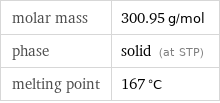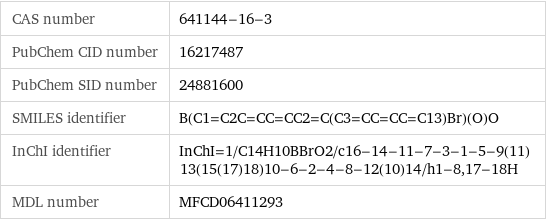Input interpretation

10-bromoanthracene-9-boronic acid
Chemical names and formulas

formula | C_14H_10BBrO_2 name | 10-bromoanthracene-9-boronic acid IUPAC name | (10-bromo-9-anthryl)boronic acid alternate names | (10-bromo-9-anthryl)boronic acid | (10-bromoanthracen-9-yl)boronic acid mass fractions | B (boron) 3.59% | Br (bromine) 26.6% | C (carbon) 55.9% | H (hydrogen) 3.35% | O (oxygen) 10.6%
Lewis structure

Draw the Lewis structure of 10-bromoanthracene-9-boronic acid. Start by drawing the overall structure of the molecule, ignoring potential double and triple bonds: Count the total valence electrons of the boron (n_B, val = 3), bromine (n_Br, val = 7), carbon (n_C, val = 4), hydrogen (n_H, val = 1), and oxygen (n_O, val = 6) atoms: n_B, val + n_Br, val + 14 n_C, val + 10 n_H, val + 2 n_O, val = 88 Calculate the number of electrons needed to completely fill the valence shells for boron (n_B, full = 6), bromine (n_Br, full = 8), carbon (n_C, full = 8), hydrogen (n_H, full = 2), and oxygen (n_O, full = 8): n_B, full + n_Br, full + 14 n_C, full + 10 n_H, full + 2 n_O, full = 162 Subtracting these two numbers shows that 162 - 88 = 74 bonding electrons are needed. Each bond has two electrons, so in addition to the 30 bonds already present in the diagram add 7 bonds. To minimize formal charge carbon wants 4 bonds. Identify the atoms that want additional bonds and the number of electrons remaining on each atom: Fill in the 7 bonds by pairing electrons between adjacent highlighted atoms. Note that the six atom ring is aromatic, so that the single and double bonds may be rearranged: Answer: | |
Basic properties

molar mass | 300.95 g/mol phase | solid (at STP) melting point | 167 °C
Units

Chemical identifiers

CAS number | 641144-16-3 PubChem CID number | 16217487 PubChem SID number | 24881600 SMILES identifier | B(C1=C2C=CC=CC2=C(C3=CC=CC=C13)Br)(O)O InChI identifier | InChI=1/C14H10BBrO2/c16-14-11-7-3-1-5-9(11)13(15(17)18)10-6-2-4-8-12(10)14/h1-8, 17-18H MDL number | MFCD06411293